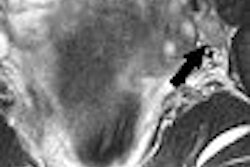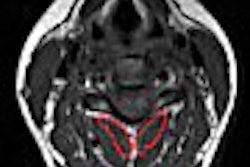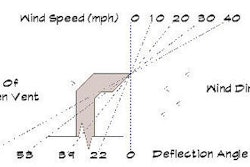During the 20-plus years of clinical MRI, this modality has mostly served ambulatory, conscious, and less-acute patients. Historically, the average patient for most facilities walks in, spends 20 to 40 minutes in the scanner, and walks out. But the clinical benefits of MRI have grown well beyond the healthy and ambulatory.
More and more, we are scanning patients who require medical gas services, ranging from supplemental oxygen to full ventilation. Unfortunately many MRI facilities, even very new suites, have been built without the forethought to include appropriate medical gas infrastructure.
What if there was basic guidance for when and how to include medical gas service for MRI suites based on clinical and engineering best practices?
Faulty medical gas infrastructure contributed to the most notorious MRI fatality in 2001. The medical gases serving the MRI suite weren't tied into the main hospital system and didn't have pressure or flow alarms. When the oxygen cylinder feeding the magnet room's outlet ran dry, the first indication was the sedated patient slipping into respiratory distress.
As a result, we are recommending that all areas -- including MRI magnet rooms, which serve anesthetized patients -- be provided with medical gases served from central systems whenever possible. All medical gas systems, irrespective of source, should be equipped with pressure and flow alarms to alert MR staff of failures prior to putting patients in jeopardy. And because even central medical gas systems aren't foolproof, MRI suites that serve anesthetized patients should also have on hand at least one portable oxygen cylinder that is safe in the MR environment.
It should go without saying that facilities without proper medical gas services should not be scanning patients that require them. The often-heard stories of imaging providers snaking a tube from a remote oxygen cylinder, either through a waveguide into the magnet room or gently closing it in the radiofrequency (RF) door, point out common, dangerous, and illegal workarounds.
Which medical gases should be provided for anesthetized patients inside the MRI suite? This depends on the types of patients, procedures, equipment, and anesthetics used. As a general guide, facilities should consider oxygen, medical air, nitrous oxide, and vacuum (one for suction and one for ventilator evacuation, as needed) at each point of care. A facility's practice and applicable codes and standards will shape this recommendation.
In October 2006, the American Society of Anesthesiologists (ASA) hosted its annual meeting, and a special task force specifically explored the issues of anesthesia in the MRI suite. Why now, with 20 years of clinical MRI behind us, does the ASA wish to review MRI anesthesia provisions? Because we are using MRI with growing frequency for the very young, the very old, and increasingly acute patients. We're also using MRI for interventional applications that weren't envisioned when the bulk of MRI suites were built.
In short, we're doing more to the bodies of MRI patients, many of whom are more sensitive to the disturbances, than we've ever done before, and we're doing them in facilities that are poorly equipped to support critical care, if needed.
Anecdotally, the rates of problems related to anesthetized patients in the MR suite appear to be rising. As MR is increasingly used for emergent and interventional care, failure to provide appropriate infrastructure, including medical gas services, puts patients at unnecessary risks. Worse yet, if the failure of the medical gas service does not injure the patient, inappropriate responses to the situation in the high-hazard magnet room (such as bringing in a ferrous oxygen cylinder) have proved fatal.
Both in terms of providing appropriate levels of care and minimizing patient injury liabilities, imaging providers would be well advised to carefully consider their current and anticipated future needs for clinical care, MR-based applications, and anesthesia. Each of these will influence decisions or what medical gases to provide at which location.
In the meantime, when the ASA issues specific guidance on this issue, rest assured you'll hear about it from us.
By Tobias Gilk
AuntMinnie.com contributing writer
December 14, 2006
Reprinted from www.mri-planning.com by permission of the authors. If you would like more information on any aspect of MR facility design or safety, please contact Robert Junk or Tobias Gilk at Jünk Architects.
Related Reading
Converting to new 'MR Safe' is hardly a fly-by-night effort, November 22, 2006
I see dead magnets -- could your quench pipe be a killer? November 16, 2006
MRI accident data: You don't know more than you think you do, October 27, 2006
DRA and MR patient throughput -- reimbursement cuts vs. unconventional wisdom, October 17, 2006
Burying an MRI: A tragedy in two acts, September 25, 2006
Copyright © 2006 Jünk Architects, PC



















